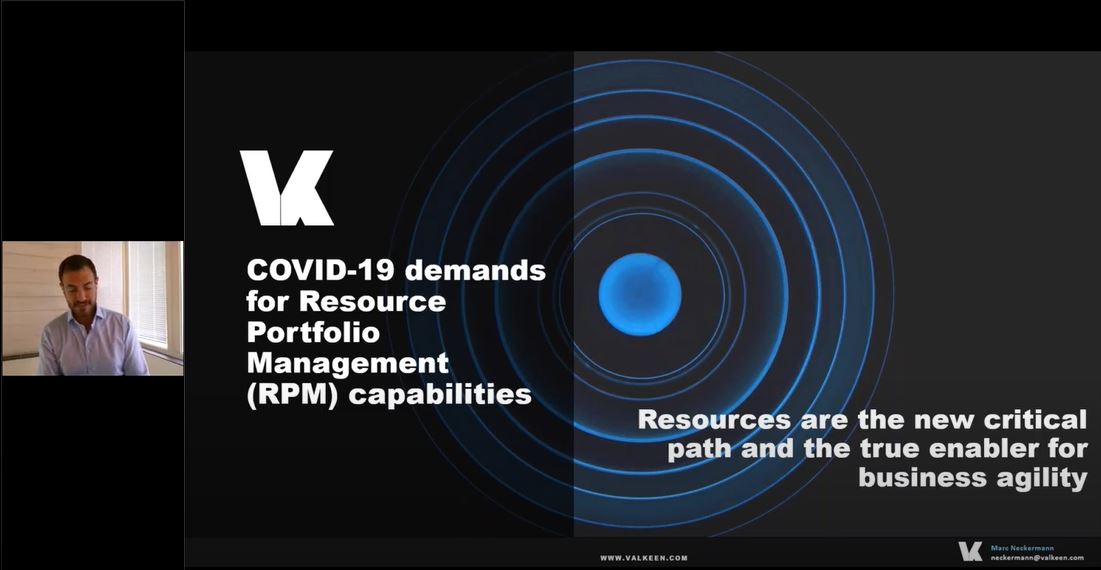EPMO, Internal Audit, IT, Product Development, Professional Services, Resource Management, Conference, Webinar

You can watch the replay of Marc Neckermann’s full presentation, “COVID-19 demands for Resource Portfolio Management (RPM) capabilities – Resources are the new critical path and the true enabler for Business Agility,” below:
Marc Neckermann of Valkeen Kicked Off the ProSymmetry European Virtual Conference on October 8, 2020
We were delighted to host our Tempus Resource partners and customers at our 2020 European Virtual Conference. Our half-day gathering included presentations on roadmapping, software integrations, achieving resource transparency, a deep dive into Tempus Version 5.2 features and upgrades, and more.
Certified Tempus Resource premier partner, Marc Neckermann of Valkeen, launched our conference with a look at how Resource Portfolio Management is the true enabler of what organizations need during this time of major global changes: business agility.
In his presentation, Neckermann digs into why resources are the new critical path, especially given the changes wrought by the COVID-19 pandemic. Already documented changes to work have greatly accelerated, propelling us toward what Neckermann calls a “new work order.” Today, the rise of remote work has become a permanent feature of the landscape. An internal analysis by Xerox Palo Alto Research Center concludes that, “future corporations will consist of a digital, core talent base. The rest will be provided from an independent cloud of temporary and mobile resources.”
How well prepared are organizations for all this change? The answer lies in their Resource Management capabilities, which are the key to thriving in the “new work order” with business agility.
“Resource Portfolio Management is the ability to utilize resources most efficiently and globally for the delivery of strategy by matching resource supply and demand (top-down and bottom up) while deriving a skill-based strategic HR plan.”
–Marc Neckermann
Beyond simply agile frameworks, Neckermann stresses that real agility is embedded into every level of the company. At Valkeen, Resource Portfolio Management is a three-layered approach, including Strategic (long-term planning), Operative (day-to-day functions), and Cultural (each resource’s humanity). Moreover, RPM is part of a four-pronged approach that coordinates Portfolio Management, Project Management, Process Management, and Resource Management, all in order to create, deliver, and capture value while rolling with external changes.
Ultimately, people are your agents of innovation, transformation, growth, and agility. Therefore, companies need PPM with RPM capacities, in order to find the most efficient and effective allocation of all resources (money and capacities), who are the true critical path.
What does a roadmap to RPM rollout look like? Neckermann offers 12 concrete steps:
Such a roadmap stands to offer organizations enhanced transparency, communication, speed, flexibility, strategic HR capabilities for workforce management such as retraining, satisfied customers, and satisfied employees. All of these are what a company needs in order to achieve true business agility.
To learn more about how Resource Portfolio Management can bring your organization business agility in times of continuous change, contact ProSymmetry, makers of Tempus Resource. And be sure to check out all of our speakers from the Tempus Resource 2020 European Virtual Conference.